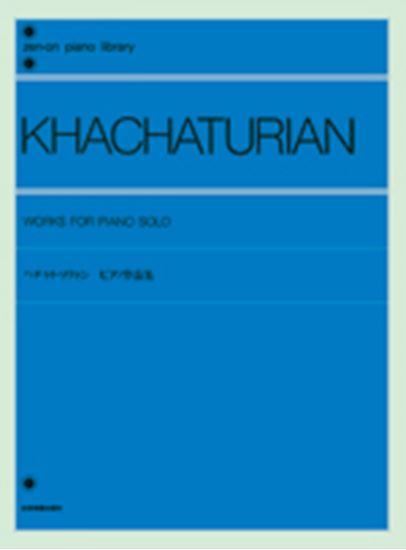Khachaturian, Aram : Sonatina
Work Overview
Music ID :
3633
Composition Year:1958 Publication Year:1959
First Publisher:Muzgiz
Instrumentation:Piano Solo
Genre:sonatina
Total Playing Time:8 min 40 sec
Copyright:Under Copyright Protection
Commentary (1)
Author : Ooi, Kazurou
Last Updated: March 12, 2018
[Open]
Author : Ooi, Kazurou
Last Updated: March 12, 2018
[Open]
Note: This article is automatically translated from the original Japanese text. The author of the original work did not supervise this translation.
Second Movement
If this is the first time a performer plays Khachaturian, it would be beneficial to begin by understanding Khachaturian's music. Listen to various genres such as piano pieces, orchestral works, and ballets. You will likely grasp Khachaturian's musical language. In fact, there are many lesser-known piano pieces; works like "Poem" could also be helpful references. Khachaturian's music can sometimes be percussive and possess intense energy, but it also frequently features folk-like melodies. This second movement of the Sonatina belongs to the latter category.
Below are some points to note:
- Play the melody starting from the minor second chord in m. 1 with a sense of 'poignancy.' The same applies to mm. 5-6. Since phrases are in four-bar units, the fourth bar should be played as if fading away. This piece should flow horizontally rather than progressing vertically. Create a smooth melodic line. The author believes that within the four-bar melodic unit, the third bar is where the tension is highest.
- In mm. 11 and 15, play the trills brightly; increasing the trill speed can prevent a heavy sound.
- Mm. 17-18, 19-20, and 21-22 are three sequences. Differentiate the atmosphere of each.
- In mm. 27-32, be careful not to let the dynamics remain at a constant level.
- In m. 39, the eighth rest in the right hand serves as a sign to treat the following E with care. You may subtly lengthen the eighth rest. This is a section you might want to emphasize slightly.
- From m. 58, it is the B section. From here, the melody alternates between the right and left hands in two-bar units. This depicts a conversation between two people.
- In m. 74, there is a shocking dominant chord. A slight subito forte is acceptable.
- Mm. 103-104 feature Khachaturian's unique cadenza. The F# appearing in m. 103 adds a percussive effect to the A-C-E extending downwards. Consider the balance. You may play it like an echo at pp, or you may play only the F# slightly louder.
Writer:
Ooi, Kazurou
Movements (3)
PTNA & Partner Channel Videos(0items)
No videos available currently.
Sheet Music
Scores List (2)

やさしいピアノ名曲集2[発表会用/CD付]
(株)エー・ティ・エヌ
(株)エー・ティ・エヌ

